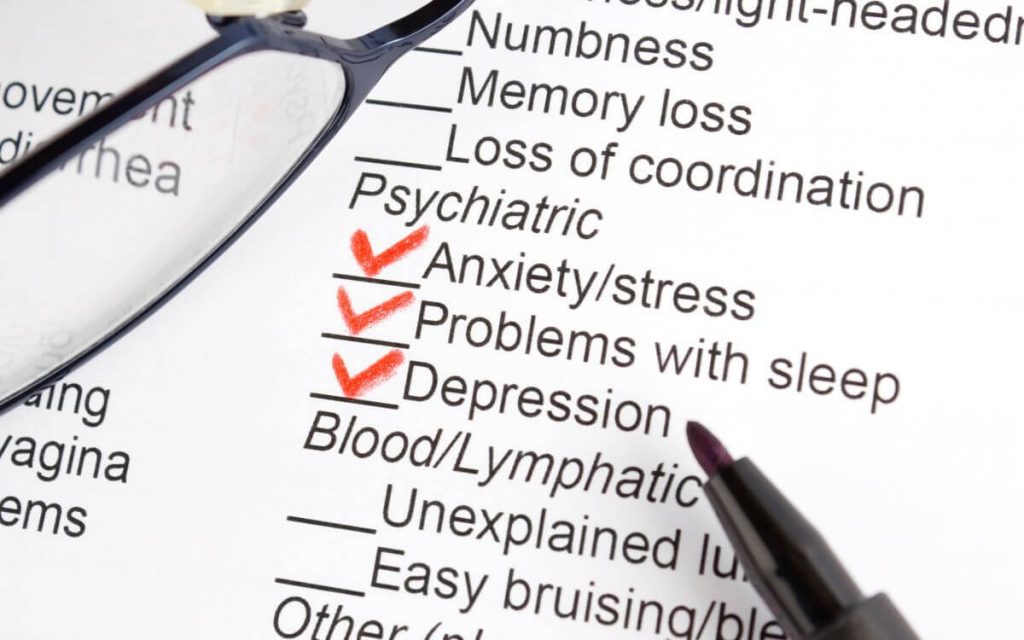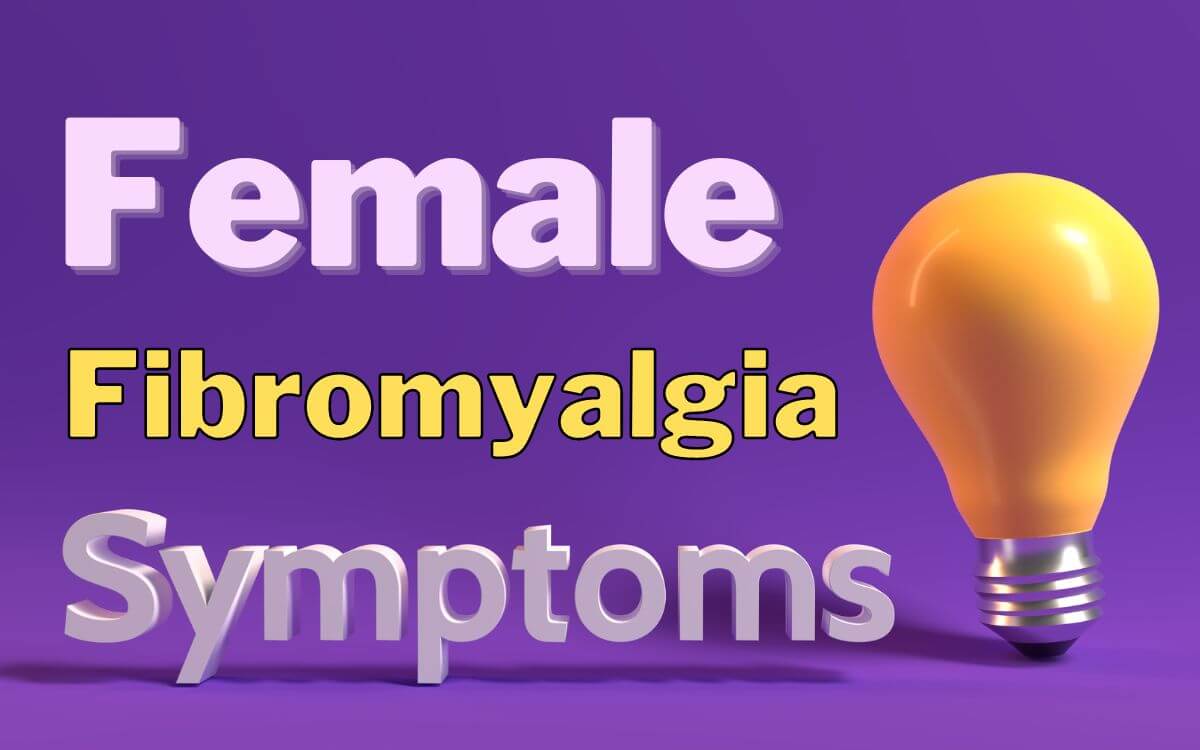What are fibromyalgia symptoms in women?
Fibromyalgia is a disorder that causes widespread musculoskeletal pain and fatigue. Although it can affect both men and women, fibromyalgia is diagnosed more often in women. In fact, as many as 90% of people with fibromyalgia are women, and since my wife suffers from this chronic disorder, I decided to answer what are fibromyalgia symptoms in women.
Let’s get started!
- Female symptoms of fibromyalgia.
- Why mostly women suffer from fibromyalgia?
- What are fibromyalgia symptoms in women?
- Stronger menstrual pain in women with fibromyalgia.
- Intense fibromyalgia pain and tender points in women.
- Increased bladder pain and bowel problems in women.
- More fatigue and feelings of depression in women.
- Brain fog, or difficulty concentrating in females.
- Headaches and migraines in females with fibromyalgia.
- Sensitivity to light, sound, and temperature changes in women.
- Dizziness and balance problems in women with fibro.
- Pelvic pain in women with fibromyalgia.
- Restless legs syndrome in female fibromyalgia.
- Wrapping up female fibromyalgia…
Female symptoms of fibromyalgia.
There are a variety of possible symptoms of fibromyalgia in women. The most common symptom is pain, which can be widespread or localized to specific areas of the body. Other common symptoms include fatigue, sleep problems, memory and concentration difficulties, mood swings, and headaches.
Not all women with fibromyalgia will experience all of these symptoms. The severity of symptoms can also vary from person to person. In some cases, symptoms may be mild and only cause occasional inconvenience. For others, symptoms can be more severe and debilitating.
If you think you may have fibromyalgia, it’s important to see your doctor for a proper diagnosis. There is no one test that can definitively diagnose fibromyalgia, but your doctor will ask about your medical history and symptoms and may order some tests to rule out other conditions.
Once other conditions have been ruled out, a diagnosis of fibromyalgia is made based on the presence of certain criteria, such as widespread pain and fatigue.
There is no cure for fibromyalgia, but there are treatments that can help manage symptoms.
These include medications, exercise, relaxation techniques, and cognitive behavioral therapy. Working with your doctor, you can develop a treatment plan that’s right for you and help improve your quality of life.
If you want to learn more about fibromyalgia, I wrote an eBook that is available here on my blog. “Fibromyalgia for Caring Partners” e-Book, in which 1st chapter is absolutely FREE! And if you like it, you will get a whopping 33% discount on the whole book.
FREE Fibromyalgia e-Book
Fibromyalgia for Caring Men

Why mostly women suffer from fibromyalgia?
To answer why more women suffer from fibromyalgia we need to first understand what fibromyalgia is.
To quickly remind you, fibromyalgia is a disorder that causes widespread musculoskeletal pain and fatigue. The cause of fibromyalgia is unknown, but it is thought to be related to changes in the way the brain processes pain signals.
Fibromyalgia is often associated with other conditions, such as irritable bowel syndrome, anxiety, and depression. These conditions are also more common in women than men.
It’s possible that the higher incidence of fibromyalgia in women is due to hormonal changes. Estrogen has been shown to play a role in pain processing, and levels of estrogen fluctuate throughout a woman’s life, including during pregnancy, menopause, and the menstrual cycle.
Hormonal changes may explain why fibromyalgia is more common in women of childbearing age. However, more research is needed to confirm this link.
Other risk factors for fibromyalgia include a family history of the condition, trauma or injury, and certain infections.
There is no cure for fibromyalgia, but treatments can help manage symptoms. These include medications, exercise, relaxation techniques, and cognitive behavioral therapy.
What are fibromyalgia symptoms in women?
There are a variety of possible symptoms of fibromyalgia in women. What differs male fibromyalgia from female fibromyalgia is that women are more likely to experience:
According to this source “Sometimes men receive a misdiagnosis because they may describe fibromyalgia symptoms differently. Women often report higher pain intensity than men. The reasons behind this may be related to hormones, immune system differences, or genes”.
Fibromyalgia symptoms in women can vary from female to female, however, female fibromyalgia differs from males in many ways, including:
- Stronger menstrual pain.
- Intense fibromyalgia pain and tender points.
- Increased bladder pain and bowel problems.
- More fatigue and feelings of depression.
- Brain fog, or difficulty concentrating.
- Headaches and migraines.
- Sensitivity to light, sound, and temperature.
- Dizziness and balance problems.
- Pelvic pain.
- Restless legs syndrome.
In the following paragraphs, I explain them one by one…
Stronger menstrual pain in women with fibromyalgia.
Women with fibromyalgia are more likely to have symptoms of premenstrual syndrome (PMS) more often along with primary dysmenorrhea and painful menstrual periods. Women can also experience lower abdominal and back pain a few days before their menstruation.
Painful menstruation can also be a symptom of other conditions, and this is why fibromyalgia symptoms in women can be mistaken for symptoms of other chronic illnesses or disorders.
Sometimes, fibromyalgia in women co-exists with endometriosis, pelvic floor dysfunction, and interstitial cystitis/bladder pain syndrome. My wife has all of the above. She suffers from stage IV deep infiltrating endometriosis that affected her bladder and the bowel.
Stronger menstrual pain in women with fibromyalgia can also be caused by an increase in the number of prostaglandins. Prostaglandins are hormones that stimulate muscle contractions in the uterus, which can lead to cramping and pain.
Intense fibromyalgia pain and tender points in women.
Tender points are areas of the body that are painful to touch. People with fibromyalgia often have pain in these specific areas, which can be a symptom of the condition.
There are 18 possible tender points in the body, and people with fibromyalgia usually have pain in at least 11 of these areas. Tender points are found in the neck, shoulders, chest, lower back, hips, shins, elbows, and knees.
Women with fibromyalgia may also experience more widespread pain than men. Widespread pain is defined as pain that affects both sides of the body and occurs above and below the waist.

Increased bladder pain and bowel problems in women.
Interstitial cystitis (IC) is a condition that causes bladder pain and can be a symptom of fibromyalgia. IC is more common in women than men, and it’s estimated that up to 80% of people with IC also have fibromyalgia.
Bowel problems are also common in people with fibromyalgia. These problems can include irritable bowel syndrome (IBS), constipation, diarrhea, and abdominal pain.
More fatigue and feelings of depression in women.
Fatigue is one of the most common symptoms of fibromyalgia. It can be hard to describe how fatigue from fibromyalgia feels because it can vary from person to person.
For some people, it may feel like exhaustion or extreme tiredness. For others, it may feel like you have no energy at all.
Depression is also common in people with fibromyalgia. It’s estimated that up to 60% of people with fibromyalgia also have depression. Depression can make fibromyalgia symptoms worse, so it’s important to get help if you’re feeling depressed.
Brain fog, or difficulty concentrating in females.
Brain fog is a symptom of fibromyalgia that can cause problems with thinking, memory, and concentration. It can be hard to explain how brain fog from fibromyalgia feels because it can vary from person to person.
For some women, it may feel like forgetfulness or distraction. For other women, it may feel like confusion or disorientation. My wife often feels distracted and has problems concentrating while working with her laptop.
Headaches and migraines in females with fibromyalgia.
Headaches are a common symptom of fibromyalgia, and they can be debilitating symptoms.
Migraines are a type of headache that is more severe than a regular headache. People with migraines often have other symptoms, such as nausea, light sensitivity, and pain on one side of the head.
Fibromyalgia in women causes worse headaches and migraines because of the hormonal changes that women experience. These changes can make the pain from headaches and migraines more severe.
Sensitivity to light, sound, and temperature changes in women.
My wife including. Women with fibromyalgia often have sensitivities to changes in light, sound, and temperature. These sensitivities can be a symptom of the condition.
For some women, these sensitivities can be mild. But for others, they can be severe and debilitating. These sensitivities can make it hard to be in a bright room or to be around loud noises. They can also make it hard to be in a hot or cold environment.
Women with fibromyalgia may have more sensitivity to changes in light, sound, and temperature than men. This is because of the hormonal changes that women experience. These changes can make the sensitivities more severe.
Dizziness and balance problems in women with fibro.
Dizziness and balance problems are common in people with fibromyalgia. These symptoms can make it hard to do everyday activities like walking or standing up. They can also cause problems with driving or operating machinery.
Dizziness and balance problems are caused by the same thing that causes sensitivities to changes in light, sound, and temperature. These are the hormonal changes that women experience.
These changes can make the symptoms more severe because they affect the inner ear. The inner ear is responsible for balance and for helping us to keep our eyes focused when we move our heads.
Pelvic pain in women with fibromyalgia.
Pelvic pain is a common symptom of fibromyalgia in women. This pain can be caused by the pelvic floor muscles and tissues.
A pelvic floor is a group of muscles and tissues that support the bladder, uterus, and rectum.
Pelvic pain can be a symptom of other conditions, such as endometriosis or interstitial cystitis. But it’s more common in women with fibromyalgia. Pelvic pain can be a debilitating symptom. It can make it hard to do everyday activities like going to work or taking care of your family.
There are treatments that can help relieve pelvic pain. But it’s important to get help from a doctor or other healthcare provider if the pain is severe.
Restless legs syndrome in female fibromyalgia.
Restless legs syndrome in female fibromyalgia is a creepy, crawly feeling in the legs that wakes you from sleep. It can be hard to describe how this feeling feels because it can vary from person to person.
For some women, it may feel like bugs are crawling on their legs. For other women, it may feel like their legs are tingling or itching. Restless legs syndrome can make it hard to get a good night’s sleep. This can make fatigue and other symptoms of fibromyalgia worse.
FREE Fibromyalgia e-Book
Fibromyalgia for Caring Men

Wrapping up female fibromyalgia…
Fibromyalgia in women causes a variety of symptoms that can be debilitating. These symptoms include headaches and migraines, sensitivities to changes in light, sound, and temperature, dizziness and balance problems, pelvic pain, and restless legs syndrome.
These are just a few of the symptoms that women with fibromyalgia may experience. Fibromyalgia is a complex condition that can cause a wide variety of symptoms.
If you think you may have fibromyalgia, it’s important to see a doctor or other healthcare provider.
They can help diagnose the condition and develop a treatment plan with the help of a doctor who specializes in this condition – a rheumatologist. There is no cure for fibromyalgia, but treatments can help relieve the symptoms.
If you have any concerns, questions, or advice of your own, do share in the comments section below.


About Me
Hi, I’m Lucjan! The reason why I decided to create this blog was my beautiful wife, who experienced a lot of pain in life, but also the lack of information about endometriosis and fibromyalgia for men…
